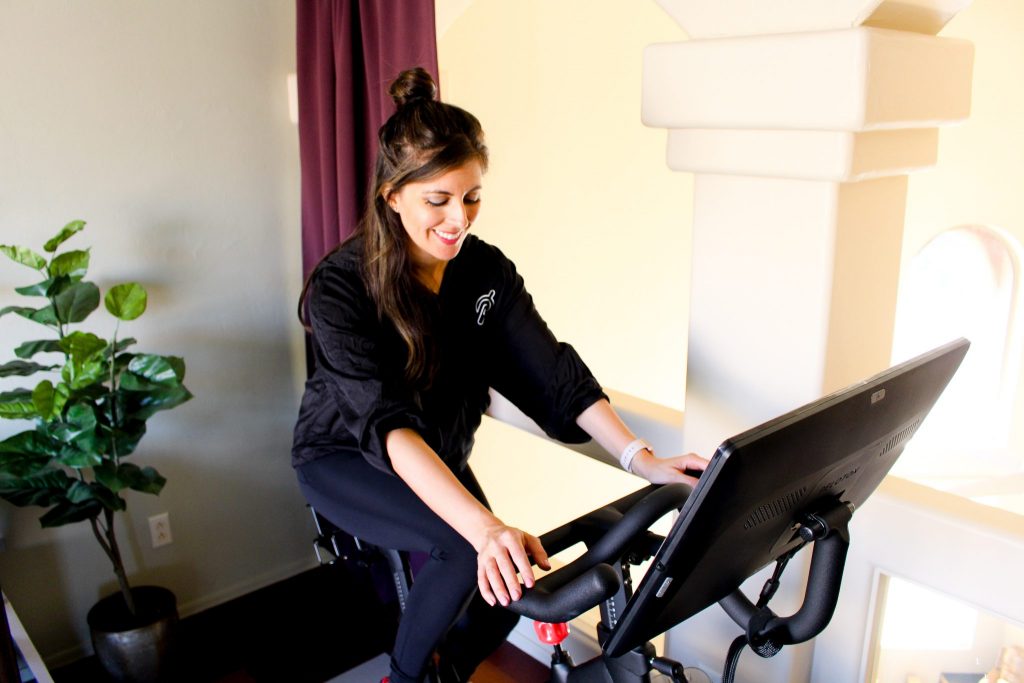Digital risk management tools for 2025
Who else remembers the episode of Friends where they’re trying to move a couch around a tight corner on a staircase, and Ross starts yelling “Pivot!”
That pretty much sums up how a lot of businesses are feeling these days.
There’s plenty of uncertainty to go around, and there are plenty of questions about what lies ahead — and what the impact will be on businesses across the country.
If only we had a crystal ball that actually worked. Until then, the best thing businesses can do is prepare and plan ahead, which is the crux of risk management.
Not sure how to handle monitoring and risk-proofing all the different aspects of your organization? Good news: Digital risk management tools take the guesswork out of risk management and make it easy to identify, assess, and respond to threats.
So, since uncertainty has become a buzzword, and our “unprecedented times” have become a lot more precedented, we thought this would be an ideal time to look at digital risk management tools and how they can help businesses mitigate threats before they turn into problems. We’ll also keep looking for a working crystal ball.
Let’s get into it.
- What’s going on?
- Cybersecurity assessment platforms
- Business continuity planning software
- Supply chain risk management tools
- Compliance management systems
- Employee security training platforms
- Employee training tools
- What’s new from Embroker
What’s going on?
Business Continuity Plans Lacking Among SMBs: Nationwide Survey — Insurance Journal
A recent survey found that one in five businesses lack a business continuity plan, leaving them vulnerable to operational disruptions.
A Matter of Trust: How AI Is Reshaping Risk Assessment — PYMNTS
We’ve all heard the cyber horror stories of hackers and other threat actors using AI tools to conduct more sophisticated cyberattacks. But, on the flip side, AI is also helping companies to “supercharge their defensive capabilities.” And that’s a trend we can all get behind.
Five Things to Know On CrowdStrike’s New Exposure Management Launch — CRN
There have been a lot of headlines lately about CrowdStrike’s fast-growing Falcon Exposure Management offering. If you’re unsure about what’s been going on or looking for a rundown of just the highlights, this article covers the latest.
Global Trade Disruption Reshapes Business Risk Landscape — Risk & Insurance
Heightened risks around the economy, geopolitics, and climate change are leading business leaders to develop new frameworks for managing global supply chains. TL;DR: We weren’t kidding about there being lots of uncertainty to go around.
Cybersecurity assessment platforms

No one wants an unwanted visitor to crash a party. Now, let’s translate that to businesses and the digital world. Preventing unwanted guests (hackers) is where cybersecurity assessment platforms come in.
Cybersecurity assessment platforms are designed to help companies check how secure their digital information is — and then suggest ways to make it even safer. These tools can thoroughly analyze a company’s cybersecurity policies, regulatory compliance, and vulnerabilities, like setting the network password to “password123,” so businesses can remediate digital weaknesses. It’s all about making sure no one can sneak in through an unlocked side door and wreak havoc.
Examples include:
Bitsight: With more than 3,300 customers and 65,000 users, Bitsight provides real-time visibility into cyber risk and threat exposure, which can enable teams to quickly identify weak spots, detect threats, prioritize actions, and mitigate risk. Bitsight says its security ratings solution helps companies understand their own security performance and that of their vendors, clients, and other third parties.
SecurityScorecard: Recognized as a trusted resource by the U.S. Cybersecurity & Infrastructure Security Agency, SecurityScorecard delivers end-to-end supply chain cybersecurity to safeguard business continuity. SecurityScorecard created Supply Chain Detection and Response, which helps security teams actively prevent third-party breaches by enhancing the security preparedness of their organization and suppliers.
UpGuard: Helping businesses manage cybersecurity risks across their supply chains, UpGuard’s integrated risk platform provides businesses with a comprehensive view of their risk. Using proprietary security ratings, data leak detection capabilities, and remediation workflows, UpGuard helps organizations of all sizes proactively identify security vulnerabilities.
Software to keep your business running

Business continuity planning tools can save the day when a curveball is thrown your way — whether that’s a minor inconvenience or a major disaster.
These tools facilitate developing, documenting, and managing business continuity plans, ensuring operations can continue during and after a crisis. Designed to automate business continuity management processes, business continuity planning software helps organizations minimize downtime, protect assets, and ensure a swift recovery when disaster strikes.
Examples include:
Archer: Used by customers in 48 countries, Archer helps organizations transform risk management into business-enabling strategies. Archer offers a scalable approach that allows businesses to proactively prepare for and protect against potentially devastating disruptions. With Archer, businesses can identify and catalog critical processes and systems to develop business continuity and disaster recovery plans to safeguard operations.
Fusion: Fusion helps businesses build proactive continuity and resiliency strategies. The Fusion Framework System provides interactive ways to analyze all business aspects to identify risks, points of failure, and the appropriate response to mitigate damages. Fusion recently launched BC Plan inFusion, which lets customers upload static business continuity plans to have the information converted into usable data in just a few minutes.
Supply chain risk management tools

Supply chain risk management tools, unsurprisingly, help keep a company’s supply chain running smoothly. They help businesses identify, assess, and mitigate potential problems, such as supplier reliability, political issues, natural disasters, or sudden market changes.
By using these tools, businesses can stay ahead of challenges and reduce supply chain vulnerabilities and disruptions, which is increasingly critical in today’s interconnected business environment.
Examples include:
interos.ai: Described as the world’s first and only automated supplier intelligence platform, interos.ai offers lifecycle supply chain risk management to help mitigate hidden threats. The company uses AI to continuously map and monitor millions of suppliers and billions of relationships to protect organizations from various weak points for a comprehensive view of risk across physical and digital supply chains.
Resilinc: Resilinc’s supplier-customer collaboration platform integrates comprehensive data analytics, real-time risk event monitoring, mapping, and AI-powered predictive insights to give businesses an understanding of their multi-tier supply chain. Resilinc’s AI-powered platform can help organizations anticipate, mitigate, and respond to disruptions. Companies can track and analyze a variety of supply chain data points and potential risks.
Compliance management systems

Compliance regulations are constantly changing, and keeping up can feel like a challenging and never-ending game of catch-up. And the stakes are high since failing to meet regulatory requirements can lead to hefty financial penalties.
Compliance management systems are tools and controls that automate and streamline compliance monitoring, managing, and reporting processes, reducing the risk of violations and penalties. A compliance management system can include anything from risk assessments to compliance training.
Examples include:
LogicGate: A cloud-based platform, LogicGate says its goal is to make governance, risk, and compliance (GRC) processes easier for all businesses. LogicGate’s no-code app builder and pre-built templates let organizations adjust processes and workflows as needed and automate their own GRC tasks. LogicGate recently launched its Value Realization Tool, which provides insight into the financial value of GRC programs.
MetricStream: With over a million global users, MetricStream offers integrated risk management and GRC solutions that enable companies to transform risk into a strategic advantage. MetricStream’s platform promotes a holistic and collaborative approach to enterprise-wide GRC activities. According to MetricStream, its customers, on average, see a 90% reduction in time managing compliance activities.
Employee security training platforms

Think of employee security training platforms as a cybersecurity boot camp for your team -– but fun and without any of the militaristic intensity. These platforms teach employees how to spot cyber threats in the workplace, which is increasingly important since 95% of data breaches are tied to human error.
With employee security training, companies can promote a culture of cybersecurity awareness and empower employees to act as the first line of defense against cyber risks.
Examples include:
Infosec IQ: Infosec says its mission is to put people at the center of cybersecurity by providing knowledge and skills to help employees stay cyber-secure at work and home. Infosec IQ’s industry- and role-based cybersecurity training personalizes education so that it is relevant to an employee’s role and the cyber threats they’re most likely to encounter.
KnowBe4: KnowBe4’s HRM+ platform includes security awareness and compliance training, cloud email security, anti-phishing, real-time coaching, and more. KnowBe4 says it uses personalized and relevant content, tools, and techniques to “mobilize workforces to transform from the largest attack surface to an organization’s biggest asset.”
Employee training tools

Employee training tools are designed to promote a positive and collaborative workplace environment. Basically, they help get everyone on the same page with the company culture.
The tools can cover things like company policies, improving communication and teamwork, and even training for job-specific skills. The benefit of using employee training tools is more than just compliance — they can help boost employee morale, which is a definite bonus for recruitment and retention.
Examples include:
Emtrain: Emtrain’s solutions help develop inclusion, ethics, and respect as professional competencies. Emtrain partners with industry experts and uses current events to create video-based training on topics such as unconscious bias and respect. With Emtrain, companies can benchmark their corporate culture against the global community to identify issues before they become problems.
Traliant: Traliant offers tailored, interactive, story-based online training designed to engage employees. An in-house legal team ensures that the courses offered are continuously compliant. Traliant’s library of courses, including training on inclusion and code of conduct, can help broaden perspectives, achieve compliance, and elevate workplace culture.
Excelerator Consulting: Excelerator delivers custom programs focused on achieving measurable workplace improvements in areas like compliance training, leadership consulting, and HR functions. Their Excelerator HR Essentials option gives clients access to a dedicated virtual advisor, a mini HR audit, and an extensive document library.
What’s new from Embroker?
Upcoming events, stories, and more
Business Insurance Index: Tech Sector
The wait is over! Embroker’s 2024 Business Insurance Index: Tech Sector is here. Our detailed analysis reveals how tech companies are navigating business insurance decisions in the evolving risk landscape. One surprising trend: Tech companies with $25M+ in funding are increasingly opting for lower D&O limits.
Introducing Embroker’s new VP of Underwriting
We’re thrilled to welcome Stephen Easley to the Embroker team as the new Vice President of Underwriting. With more than 25 years of specialty underwriting expertise, Stephen brings a wealth of knowledge that will help expand our underwriting capabilities and refine our specialty insurance products. Check out this recent blog post to learn more about Stephen’s experience and vision for Embroker’s future.
Employment Practices Liability Insurance: Why Small Businesses Need EPLI
Embroker’s Head of Claims, Corrie Hurm, was recently interviewed for a business.com article regarding the importance of employment practices liability insurance for small businesses. This quote highlights the issue perfectly: “What is particularly troubling is that many organizations don’t recognize the need for EPLI until they are already facing a claim.”














